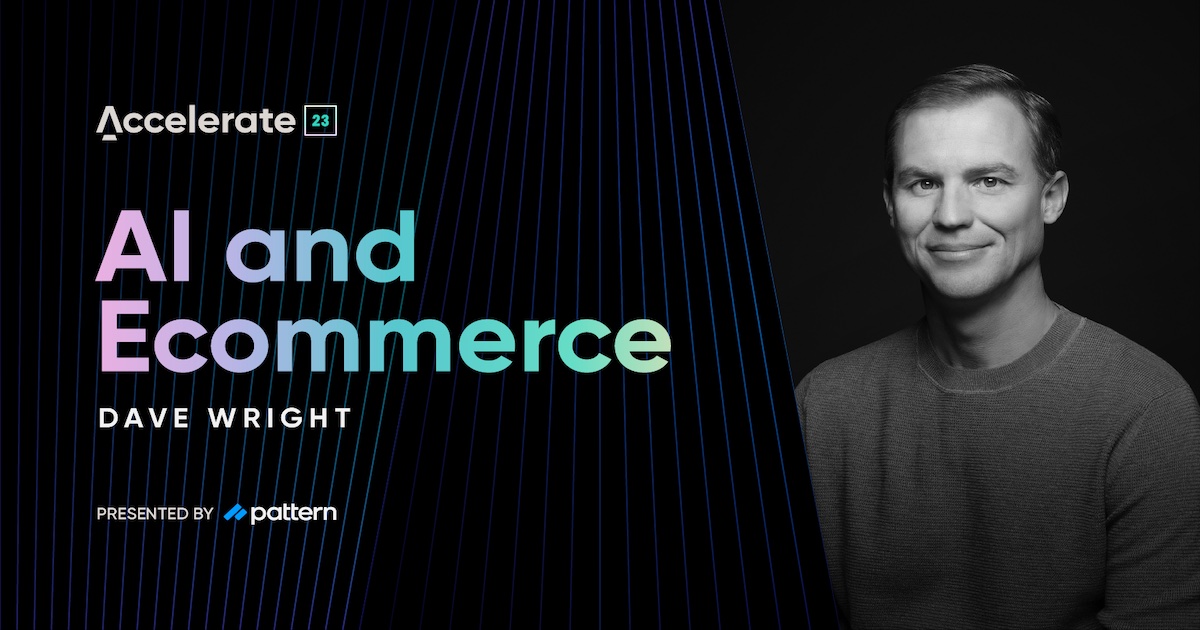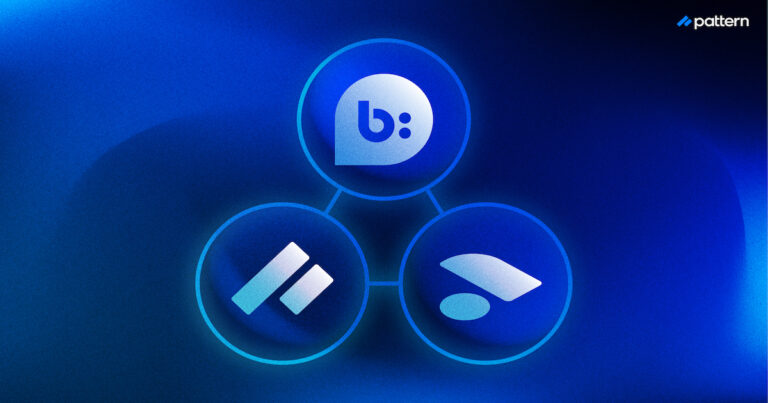One of the hottest topics at Accelerate23 was AI and ecommerce. Accelerate is an industry-wide conference that brings together the brightest minds in ecommerce to learn from and collaborate with. This year’s event, with over 1500 attendees, focused on ecommerce trends, global growth, brand control, marketplace acceleration, digital marketing, technology, logistics and fulfilment, and more.
AI, though, seemed to be a special focus for many attendees. Pattern CEO Dave Wright’s session on AI and ecommerce was packed to standing room only with brand leaders trying to get an understanding of what’s on the horizon as AI technology starts to enter our lives and workplaces.
Dave’s message was simple: It’s important to experiment with and keep a pulse on AI—it unlocks massive opportunities for ecommerce brands to scale their outputs and stay ahead of the competition.
Advancements in AI
The general public has a lot of mixed feelings about AI. Like any technology, it needs to be proven out, experimented with, and improved before it can really start accomplishing great things.
However, the nature of AI tools and machine learning advancements is such that they’re useful without being 100% “ready.” Dave compared AI to self-driving cars. A self-driving car that’s 99% effective still isn’t good enough—there’s too much risk to the people inside the car if there’s any margin of error in its performance. AI, on the other hand, is still useful at only, say, 70%. There’s a lot we can learn from AI’s outputs now as it continues to progress and get closer and closer to that 100% mark.
To understand why AI is so useful in ecommerce, let’s take a look at the basics of how it works.
How AI Works
AI works by first establishing a language learning model structured by certain parameters and defined by certain tokens, or qualities. (This framework, or system, can either be closed once it’s defined or open to ongoing improvements as the system takes in new information.) Next, someone or something feeds data and prompts into that system. Artificial intelligence breaks down that information into its tokens or qualities, defines it by the system’s parameters, and generates an output.

Another way of looking at it is through this formula: F (x) = Y
- “F” is the language learning model (parameters and tokens)
- “(x)” is the data and prompts
- “y” is the label (output)
If you want to create something (a “y”), F is the system you use to create “y” and “(x)” is what you feed into the system to create the output.
Applying AI to Ecommerce
So, how can AI fit into your ecommerce strategy? Let’s start with our “y”—the outputs we need to achieve profitability on ecommerce marketplaces.
Through more than 10 years of experience in ecommerce, we’ve learned that success on ecommerce marketplaces comes down to optimisations within the Ecommerce Equation: traffic x conversions x price x availability = profitability

Here are the outputs you should be looking to achieve in each area of the equation:

With 20 new AI tools coming to market every week, it’s staggering to realise the potential of applying AI and machine learning to the outputs brands need to be successful on ecommerce marketplaces around the world.
Explore Your Ecommerce Possibilities with Pattern
Pattern, a global ecommerce accelerator, truly knows the value of staying on top of our game and innovating as times change to stay competitive. Through constant learning and innovation, we keep our brand partners’ success as our highest focus. We have the expertise, resources, data, and technology needed to help your brand achieve success on both international and domestic marketplaces.
Ready to find out what Pattern can do for your brand? Contact us here to get started.



